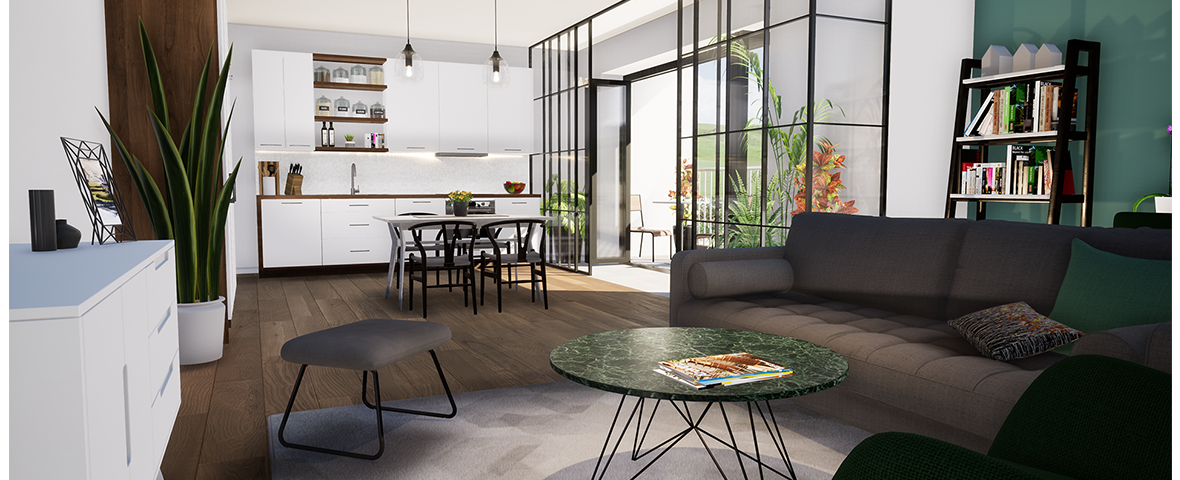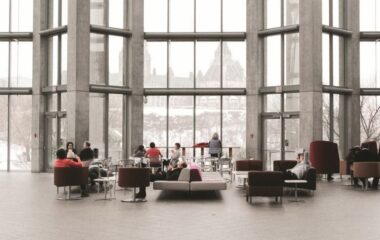Penny Brinsley, Account Director at Service Works Global, speaks to Facilitate magazine in the September / October 2022 edition about how FM can play a valuable support role to marketing and IT when creating a virtual model of facilities.
Working from home isn’t the only area which has seen an increase in remote technology since the pandemic. Marketing teams are increasingly using virtual models to showcase spaces to prospective users without them having to visit the premises in-person.
Visualisations are a powerful sales and marketing tool being used across a range of sectors, from commercial office spaces to student accommodation.
For example, overseas students who might not be able to travel can take a virtual tour of accommodation. In the commercial sector, property is often purchased prior to construction based on images and visualisations.
While a user will generally visit a site before making a final decision, virtual models are a great first step in the process – and one where facility managers can impart plenty of advice to the property and marketing teams looking to create virtual models for the first time.
What are Virtual Models?
Virtual models are digital recreations of buildings or spaces. This could take the form of a basic 3D model showing floors, walls and ceilings; a BIM (building information modelling) model which contains usable data on the building and its assets; or a visualisation.
The latter is an artistic render of spaces not yet constructed, or existing spaces reimagined with a different purpose. Visualisations bring the space to life and can make it a much more attractive proposition than simply viewing a 2D floor plan or seeing pictures of an empty space.
How FM Can Support Marketing Teams
The priority for marketing teams and property owners is to make a visualisation as desirable as possible to the prospective user. However, it’s essential to create an accurate model and this is where FMs can help.
In existing buildings, FMs can ensure that visualisations correctly map assets, access points and building materials. If a building already has a BIM model, FMs can share dimensions and layouts with marketing teams to again make sure the final visualisation is correct.
Visualisations can be tailored to a user’s needs and spaces can be virtually dressed to show how they could look when fully operational. 360-degree walkthroughs can be created of existing spaces like student accommodation to give remote students the chance to see premises without travelling.
In a commercial space, prospective customers might want to see how it will look with furniture, fittings and appliances. Again, FMs can help as they have the expertise and knowledge about this that marketing teams do not.
Benefits of Visualisations for FM
Visualisations are great as a marketing tool, but the next step for FMs is to create an accurate BIM model. These can be displayed as 2D or 3D models and accessed by the FM teams, giving them more visual tools to understand and operate a building.
BIM models give FMs access to a whole host of information and data, including:
- Measurements
- Locations
- Access points
- Information tags, such as temperature and room use.
Models can also visualise hidden parts or difficult to access areas of a buildings, such as spaces behind walls or between floors. By integrating this with an asset database, users can then see more in-depth detail such as asset history, warranties, and work-in-progress.
The benefits here are numerous. FMs can streamline maintenance and service delivery by knowing the exact condition of assets at all times. Manuals can also be stored digitally so that any operative has easy access to required documentation.
The elimination of unnecessary call outs is much more efficient and will in turn provide a cost saving to the business.
The BIM model plays its part here by enabling FMs or maintenance teams to click on points of interest and explore the surrounding spaces – all without having to travel to the site and potentially disrupt building occupants. Access to this data will also make compliance much easier to manage.
Stakeholder Buy-in
The best vendors of visualisations and BIM ensure that models are easily accessible for all stakeholders, without the need for specialist software or training. This helps to expand the use of models beyond FM and marketing.
For example, if a hospital is constructing a new wing, medical staff can access models and give their input before work begins, which will help to highlight potential problems other stakeholders might not have foreseen.
Regardless of the use, FMs are likely to be the most experienced people within an organisation when it comes to virtual models and should make sure to extol the benefits of visualisation as well as provide strategic advice.








